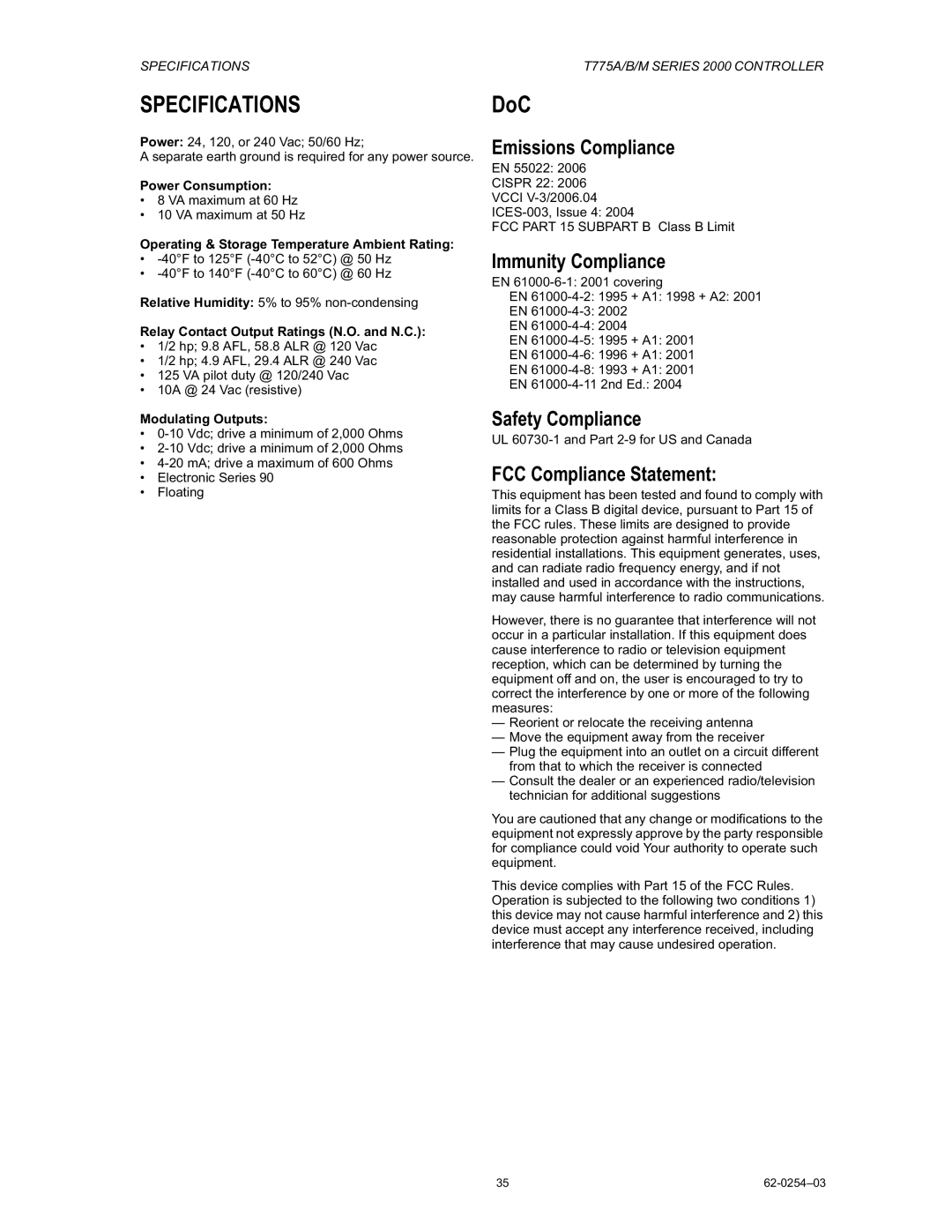AC-220-7, AC-140-7 specifications
The Honeywell AC-140-7 and AC-220-7 are advanced air conditioning units that exemplify modern air conditioning technology, delivering both comfort and efficiency. Designed for varying space requirements, these units cater to both residential and light commercial settings, providing versatile solutions for climate control.The AC-140-7 model is particularly known for its compact design, making it suitable for smaller spaces without sacrificing performance. It delivers an impressive cooling output, effectively maintaining comfortable indoor temperatures even during the hottest months. The system utilizes a high-efficiency compressor that operates quietly, ensuring minimal disruption to daily activities. Additionally, the AC-140-7 features an advanced air filtration system that helps to improve indoor air quality by capturing dust, allergens, and other particulates.
In contrast, the AC-220-7 is designed for larger spaces, providing robust cooling capacity. It incorporates multiple fan speeds and advanced thermostatic controls, allowing users to customize their cooling experience according to their preferences and requirements. One of the standout characteristics of the AC-220-7 is its energy efficiency, with a high Seasonal Energy Efficiency Ratio (SEER) rating, which is crucial for reducing energy costs while maintaining optimal performance.
Both models are equipped with state-of-the-art technologies, including smart diagnostic features that help users troubleshoot issues quickly and efficiently. This capability not only enhances the user experience but also prolongs the lifespan of the units. Furthermore, these units are easy to install and maintain, with accessible components for service and cleaning.
A critical characteristic of the Honeywell AC-140-7 and AC-220-7 is their environmentally friendly refrigerants, which align with modern environmental regulations. This aspect makes them a responsible choice for environmentally conscious consumers.
In summary, the Honeywell AC-140-7 and AC-220-7 units are excellent examples of innovation in air conditioning solutions. With their combination of efficiency, advanced features, and quiet operation, these models represent a significant investment in comfort and sustainability for any space. Whether cooling a small room or a larger area, Honeywell’s engineering excellence ensures that users enjoy effective climate control tailored to their needs.
